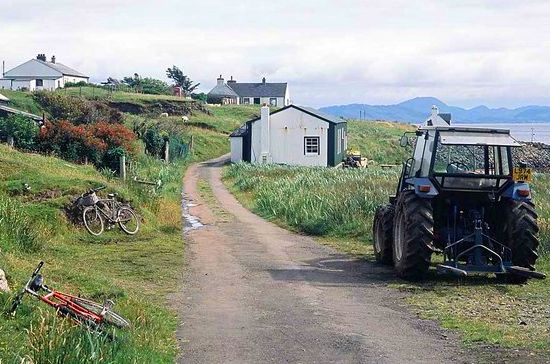
While I have to be fair, and note that some stories seen in the news will never have a conclusion, it’s still unfortunate that many of them are never seen again or followed up.
One such story provides an example which I doubt will ever be heard of again, even if an answer is found, as the folk who though the original story will have forgotten all about by the time it is solved.
Last month, there was a story which was almost headline-grabbing, as it announced the discovery of a bullet-riddled boat somewhere off the island of Muck – the discovery was actually made back on July 3.
The RNLI said that the crew of the Tobermory has found the upturned 14-foot dinghy, and that it appeared to have bullet holes in it, and that an attached sticker indicated it was a US Coastguard-certified boat.
In a statement, the MCA said: “It appears that the dinghy has a US Coastguard sticker on it and the level of marine growth suggests that it has been in the water for some time.
Via Owner sought for Muck’s ‘US boat with bullet holes’
I’m not complaining.
Rather, I’m seeking to make the point that it would nice if reporters were obliged to follow up all such stories, and find out if they were resolved in a reasonable time, or were closed out, and would never be heard of.
I read a lot of news articles, and over time, find it disappointing that I never learn of the outcome of most of them, even if they are vaguely intriguing, as in this case.
I could, and do, follow some of them up, but even with the capabilities of the various web search tools now available, all I usually come up with is confirmation that the most recent story on the subject is the original one, and nothing appears later, as a follow-up or answer.


